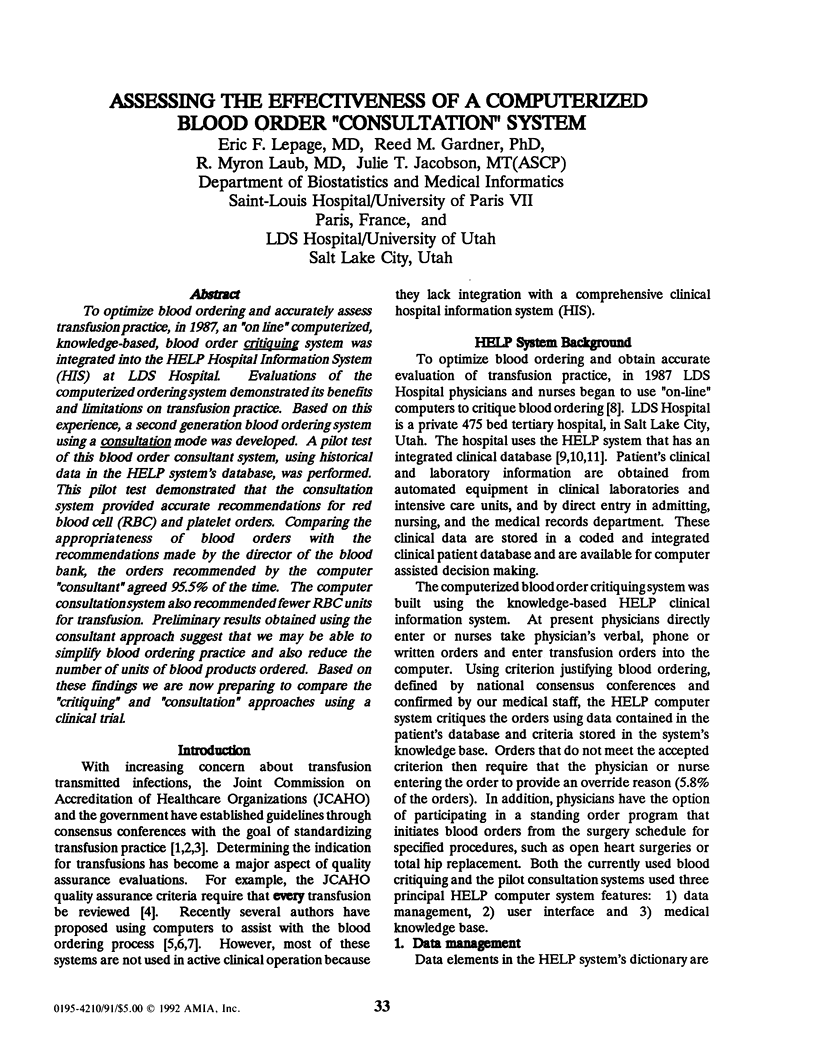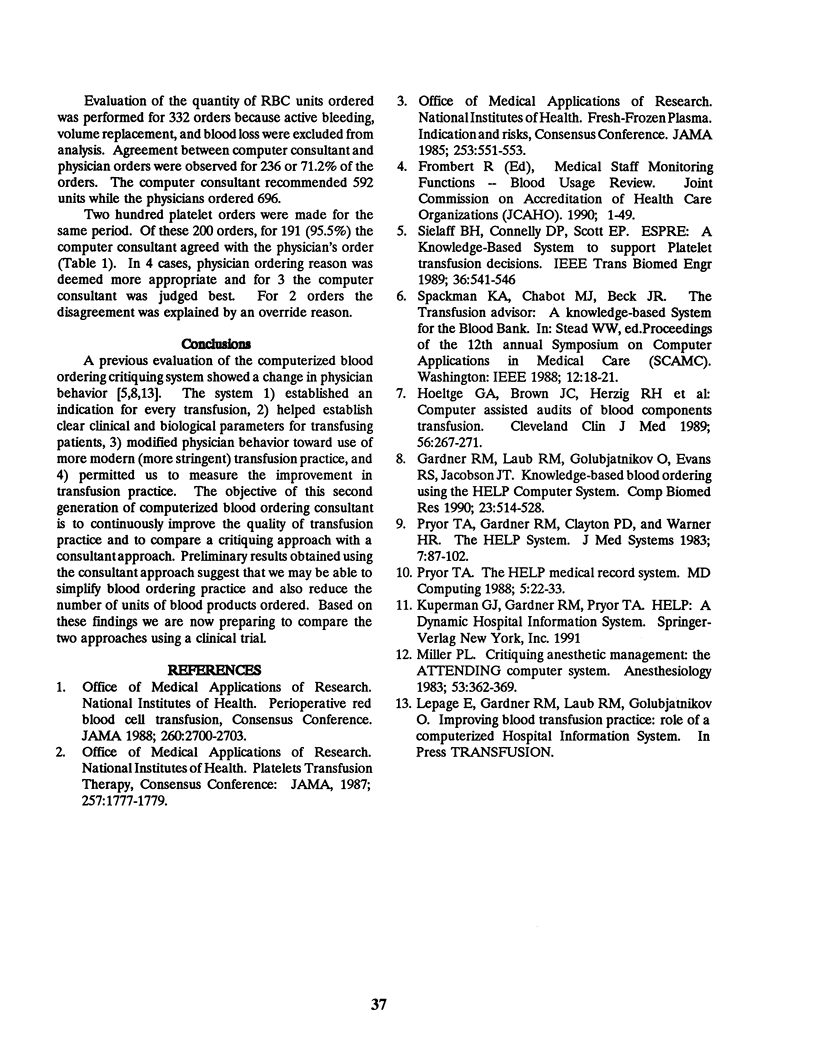Abstract
To optimize blood ordering and accurately assess transfusion practice, in 1987, an "on line" computerized, knowledge-based, blood order critiquing system was integrated into the HELP Hospital Information System (HIS) at LDS Hospital. Evaluations of the computerized ordering system demonstrated its benefits and limitations on transfusion practice. Based on this experience, a second generation blood ordering system using a consultation mode was developed. A pilot test of this blood order consultant system, using historical data in the HELP system's database, was performed. This pilot test demonstrated that the consultation system provided accurate recommendations for red blood cell (RBC) and platelet orders. Comparing the appropriateness of blood orders with the recommendations made by the director of the blood bank, the orders recommended by the computer "consultant" agreed 95.5% of the time. The computer consultation system also recommended fewer RBC units for transfusion. Preliminary results obtained using the consultant approach suggest that we may be able to simplify blood ordering practice and also reduce the number of units of blood products ordered. Based on these findings we are now preparing to compare the "critiquing" and "consultation" approaches using a clinical trial.
Full text
PDF




Selected References
These references are in PubMed. This may not be the complete list of references from this article.
- Gardner R. M., Golubjatnikov O. K., Laub R. M., Jacobson J. T., Evans R. S. Computer-critiqued blood ordering using the HELP system. Comput Biomed Res. 1990 Dec;23(6):514–528. doi: 10.1016/0010-4809(90)90038-e. [DOI] [PubMed] [Google Scholar]
- Hoeltge G. A., Brown J. C., Herzig R. H., Johannisson M. R., Millward B. L., O'Hara P. J., Orlowski J. P., Sharp D. E., Zurick A. M. Computer-assisted audits of blood component transfusion. Cleve Clin J Med. 1989 May;56(3):267–272. doi: 10.3949/ccjm.56.3.267. [DOI] [PubMed] [Google Scholar]
- Miller P. L. Critiquing anesthetic management: the "ATTENDING" computer system. Anesthesiology. 1983 Apr;58(4):362–369. doi: 10.1097/00000542-198304000-00011. [DOI] [PubMed] [Google Scholar]
- Pryor T. A., Gardner R. M., Clayton P. D., Warner H. R. The HELP system. J Med Syst. 1983 Apr;7(2):87–102. doi: 10.1007/BF00995116. [DOI] [PubMed] [Google Scholar]
- Pryor T. A. The HELP medical record system. MD Comput. 1988 Sep-Oct;5(5):22–33. [PubMed] [Google Scholar]
- Sielaff B. H., Connelly D. P., Scott E. P. ESPRE: a knowledge-based system to support platelet transfusion decisions. IEEE Trans Biomed Eng. 1989 May;36(5):541–546. doi: 10.1109/10.24256. [DOI] [PubMed] [Google Scholar]


